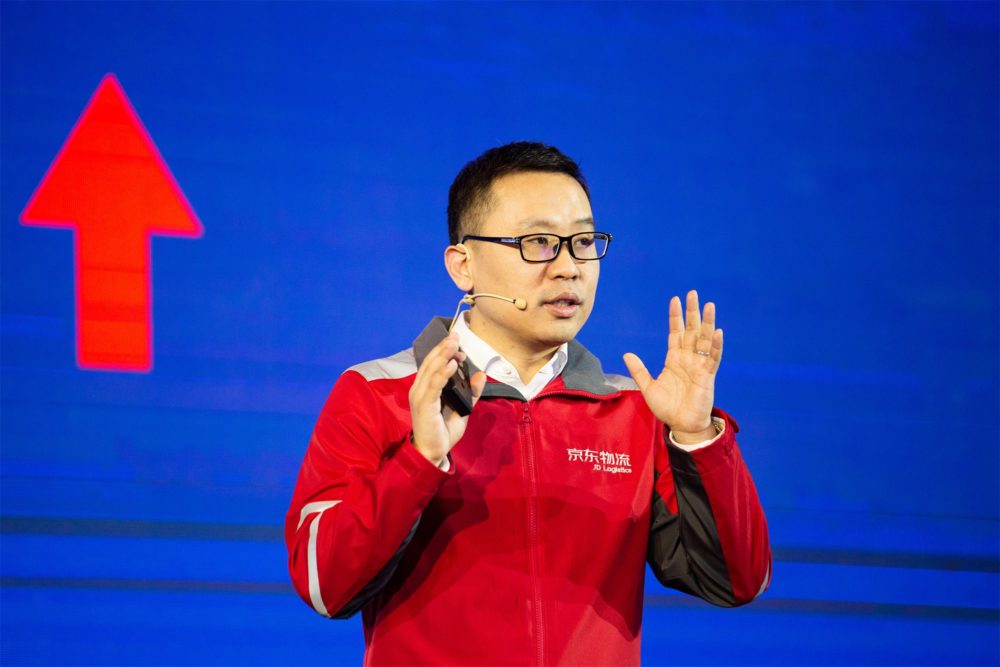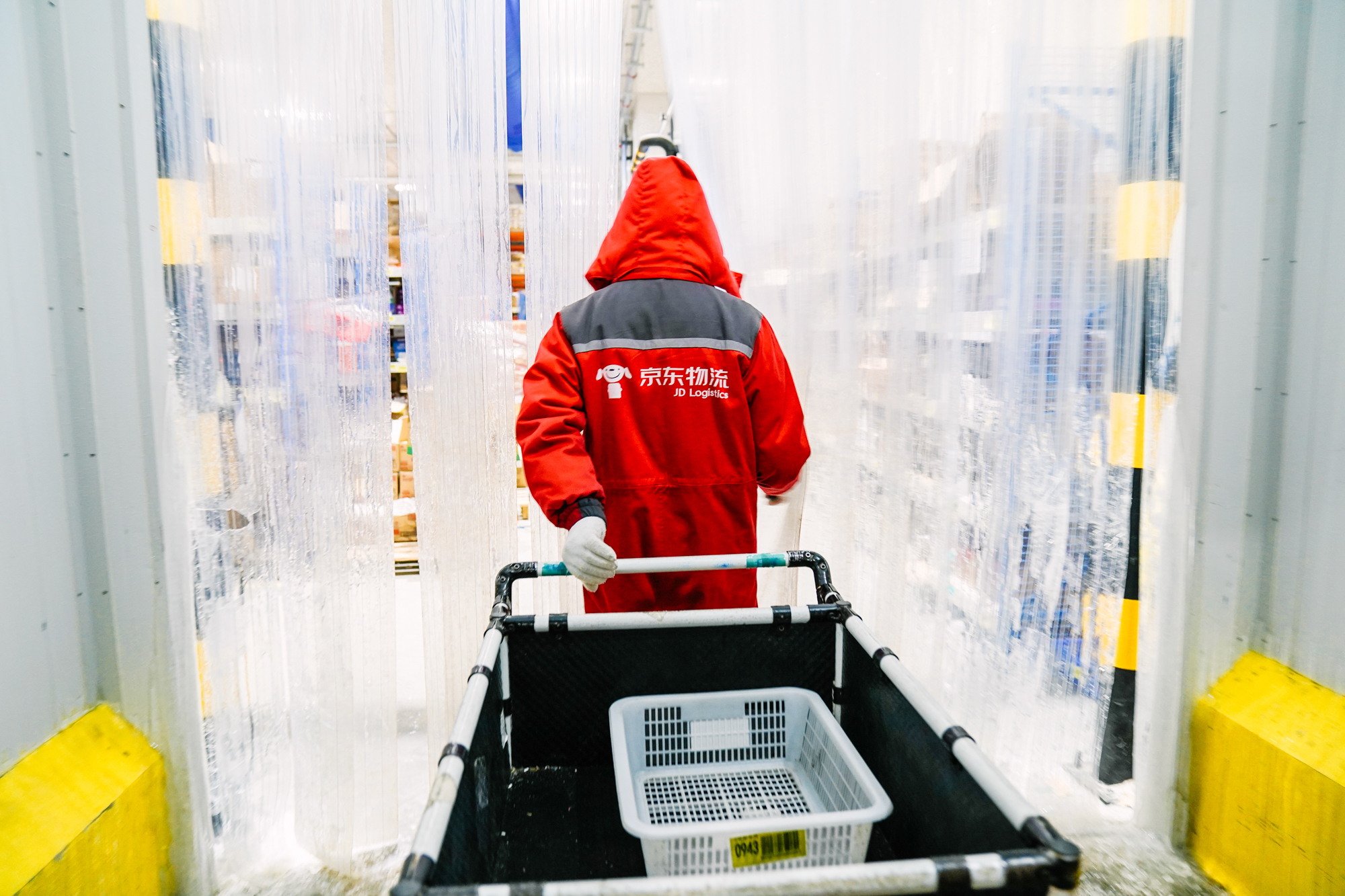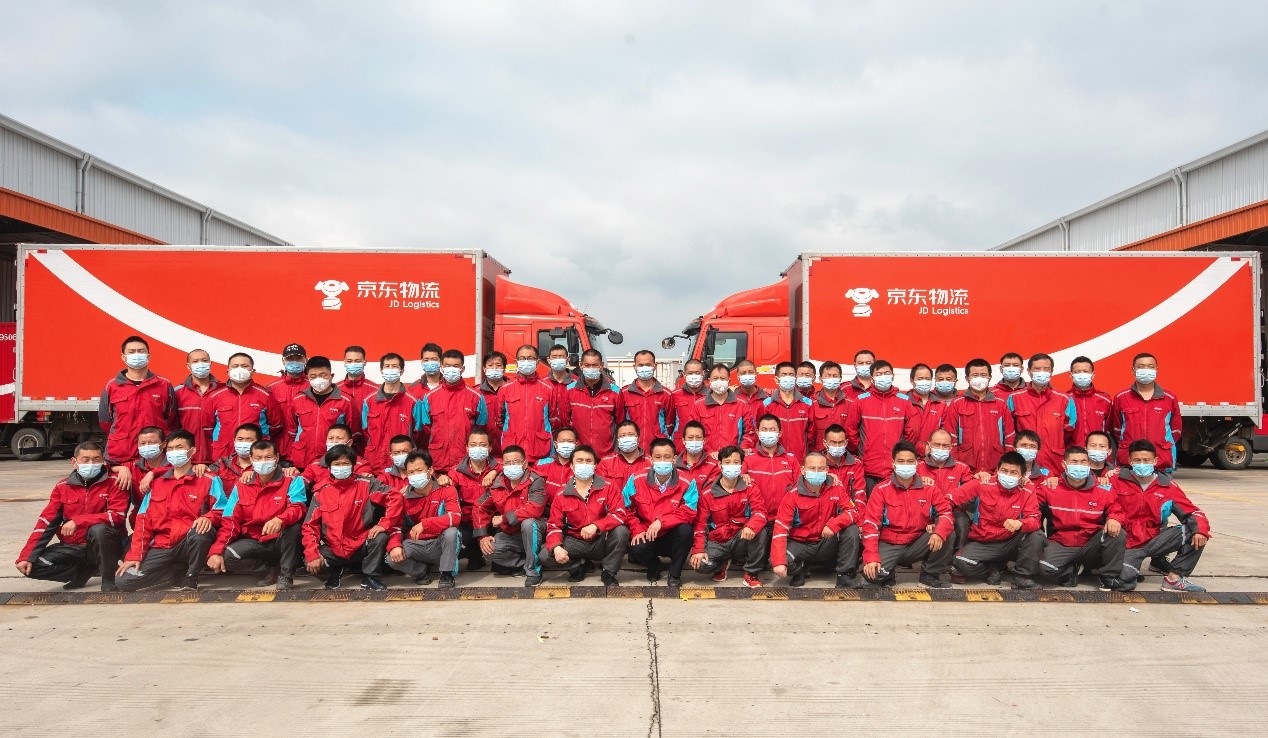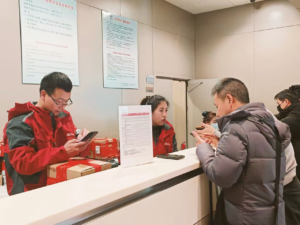Jul 17, 2020|
In-Depth Report: From In-House to Open for Business
by Ling Cao
“Some business decisions are operational, some are tactical, some are strategic, and some will determine the fate of a company’s future. JD’s strategy for expanding the operations of JD Logistics will have a major impact on the company as a whole,” said Zhenhui Wang, CEO of JD Logistics, when sharing his thoughts during a lesson he taught at an online forward-thinking cross-disciplinary business school in China.
A critical decision
In November 2016, JD Logistics made a critical decision to fully open up its services to third parties. What has the process looked like over the past three years?
Wang added, “Previously, 100% of JD Logistics’ orders came from JD.com. After we opened up our business to external partners, revenue from external services accounted for more than 40% of our total revenue. Once that number reaches 50%, I think we can say our strategy has been a success.”
JD built its in-house logistics network back in 2007 with the goal of providing customers with a best-in-class shopping experience. Now, JD’s logistics network has integrated technology-powered supply chain and logistics services. It is the only comprehensive logistics platform in the world to provide small-to-medium sized warehousing, oversized warehousing, cross border, cold chain delivery, frozen and chilled warehousing facilities, B2B and crowdsourcing logistics, it has expanded to parcel delivery services in 2018. JD made all of these services available to third parties.
How JD Logistics expanded
During this year’s 618 Grand Promotion, JD Logistics’ external services revenue grew by over 80% y-o-y. Many merchants also found that it’s more efficient to stock their products in a JD warehouse, especially during the COVID-19 outbreak in China, when JD maintained operations amid insufficient availability of warehousing and transportation services in the market.
A representative from Meixiangshike, a beef supplier on JD’s platform, shared the benefits of using JD’s logistics services: “Sixty percent of customers will inquire if the products will be delivered by JD Logistics, and 75% customers will choose to buy if the answer is yes.”
Since merchants come from a wide range of industries, their needs can differ greatly. For example, apparel companies may face pain points in terms of inventory forecasting and management; the auto industry may face challenges like how to manage a large quantity of nonstandard accessories and send them to offline stores efficiently, and food and beverages brands will think about how to ship products to customers as fast as possible. JD has identified these factors and established integrated supply chain solutions for each of them, involving logistics resources at every step, from hardware to software, and from online to offline channels. Most importantly, these solutions are tailored for different industries and entirely open.
Before partnering with JD, one bookstore needed to source products from more than 60 book suppliers. But after integrating with JD Logistics, this same bookstore was able to source all of their books from JD’s inventory, with replenishment services from JD’s nationwide in-house logistics network every week, which significantly reduced labor costs and delivery delays. Since the partnership began, the store has decreased inventory turnover to 220 days from over a year. Using JD’s big data analysis capabilities, the store now also has insights about customer buying behaviors and chooses book assortments tailored to its customer base, leading to more sales.
JD Logistics has opened up its platform to many types of clients, including e-commerce platforms, short video platforms, and offline retailers and stores. Among them are over 700 key accounts, which contributed to 20% of JD Logistics’ revenue in 2019, including Unilever, GREE, Walmart, and Mead Johnson.
JD Logistics has already entered lower tier markets. The company has grown its network and has allocated necessary resources to expand its external capabilities to additional areas. This is also consistent with many of the consumer brands on JD’s platform who seek to attract more customers in these new markets and grow their business.
The thinking behind the strategy
“First, we need to look at the industry as a whole. Before 2017, China’s logistics industry lacked integration capabilities, even though an increasing number of companies have comprehensive logistics demands and are looking for external partners. There’s huge opportunity right in front of us,” Wang shared.
Wang also said, besides the whole industry, it’s important to look at JD Logistics itself. JD Logistics has gained customers’ recognition all throughout China because of its fast and high-quality logistics service, which has also set the industry standard. Given this success internally, JD has made these services available to external partners.
In addition, JD’s logistics strategy needs to be congruent with its overall vision for the larger JD brand. First, making these services available for external partners can increase sales, which can accelerate business growth and help reduce expenses. Second, it can bring strong competition to JD’s retail business and development, creating more value for the company.
It’s not an easy task
Expanding JD Logistics is not easy. Bing Fu, head of strategy at JD Logistics, said, “The most difficult part is that all of the nearly 200,000 JD Logistics employees need to rethink how to approach the business from both an operational and management perspective, so as to consider client’s needs and wants.”
To motivate creativity among people in the organization and help the team adjust quickly, JD tested a performance mechanism called Big Boss in its logistics business group back in 2018. Under this mechanism, JD will give small teams or groups on the frontlines more authority, so they can manage their work as if they are running their own business. For example, one regional leader needs to manage its region’s business directly and be responsible for profits and losses. Executive management will only set rules or guidance. A delivery manager can also be a Big Boss. For example, they can decide how to manage the station and determine the most efficient way to allocate different couriers for various tasks, including region assignment and sending or collecting parcels.
At the same time, executives from headquarters will regularly go to frontline delivery stations to make sure employees all understand this guidance. Richard Fan, head of JD Express who was at the time leading JD’s central region of China and routinely visits four provinces there. “I will talk with each head of station and explain the value of the new mechanism,” said Fan. “It’s easy to understand if you explain using data. I let them know that under the new mechanism, their potential growth is greater than before, and they will earn more if they better manage the whole station.”
All of the employees share the same corporate culture and their value is also indispensable. For JD Logistics, customer experience is always top priority, and based on that, JD Logistics will try to improve efficiency.
The healthy atmosphere will also help attract more talent. At the JD Logistics annual meeting in January, Wang said, “None of these breakthroughs would be possible without our employees. In 2019, JD Logistics invested RMB 1 billion yuan in talent development. In 2020, we will allocate another RMB 1 billion yuan as bonus on top of salaries in our talent development, and in building a welcoming environment that fosters all kinds of talent.”
Industry insight
From warehousing and transportation to last mile delivery, JD has built an integrated logistics network that can shorten the fulfillment process to increase efficiency and reach customers faster with improved precision.
According to Chinese business media outlet LatePost, JD Logistics has built a brand new business model compared with industry peers, who have to rely on additional resources.
There is still a long way to go as JD Logistics continues to implement its strategy. This is a strategy that will not only make JD Logistics’ business sustainable, but also bring valuable infrastructure to society at large. As Wang put this way, “Eventually, our dream is to leverage technology to provide value to global clients and become the world’s leading supply chain and logistics provider.”










 This Harbin tourism boom has also spurred a surge in sales of winter apparel. JD.com’s data indicates a rapid growth in the sales of warm clothing items such as down jackets, snow boots, and thermal underwear between January 1st and 7th. The sales growth is especially pronounced in southern provinces and cities such as Jiangsu, Zhejiang, Guangdong, Sichuan, and Shanghai. Notably, tall snow boots registered a 206% year-on-year increase in transactions, while padded cotton caps and thickened long down jackets soared by 158% and 134%, respectively. Beyond clothing, travel gear has also seen a considerable uptick, with a 98% year-on-year growth in transactions for large suitcases and travel backpacks in these southern regions.
This Harbin tourism boom has also spurred a surge in sales of winter apparel. JD.com’s data indicates a rapid growth in the sales of warm clothing items such as down jackets, snow boots, and thermal underwear between January 1st and 7th. The sales growth is especially pronounced in southern provinces and cities such as Jiangsu, Zhejiang, Guangdong, Sichuan, and Shanghai. Notably, tall snow boots registered a 206% year-on-year increase in transactions, while padded cotton caps and thickened long down jackets soared by 158% and 134%, respectively. Beyond clothing, travel gear has also seen a considerable uptick, with a 98% year-on-year growth in transactions for large suitcases and travel backpacks in these southern regions. In-Depth Report: JD PLUS: A Virtual Club That Gives You Privileges
In-Depth Report: JD PLUS: A Virtual Club That Gives You Privileges



